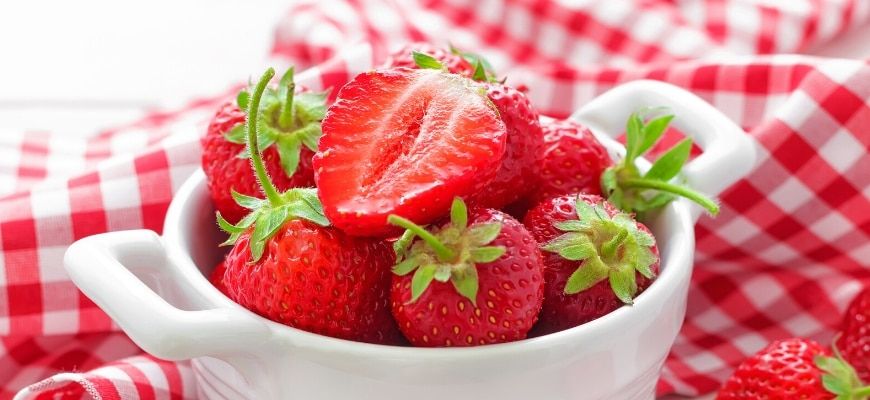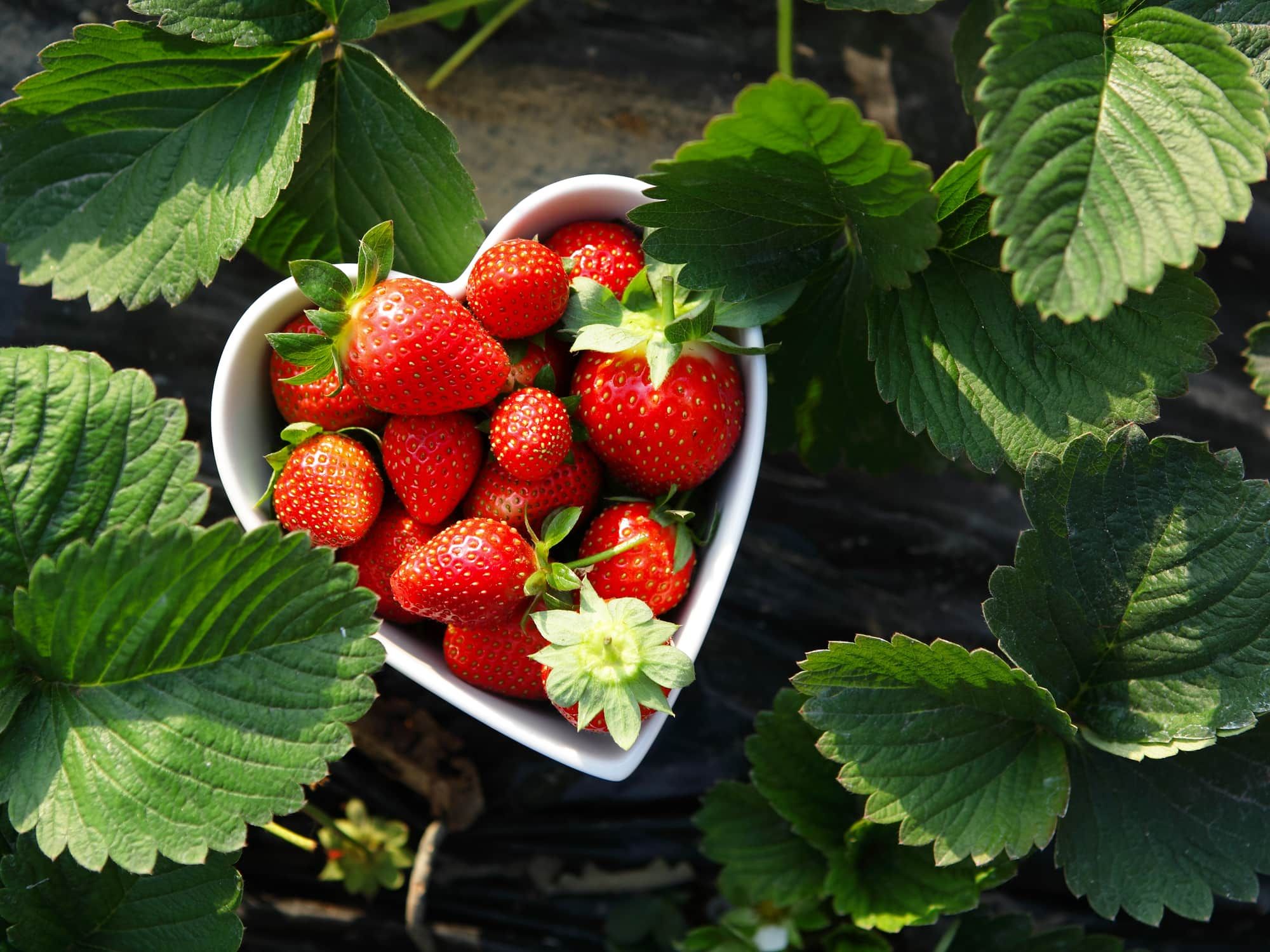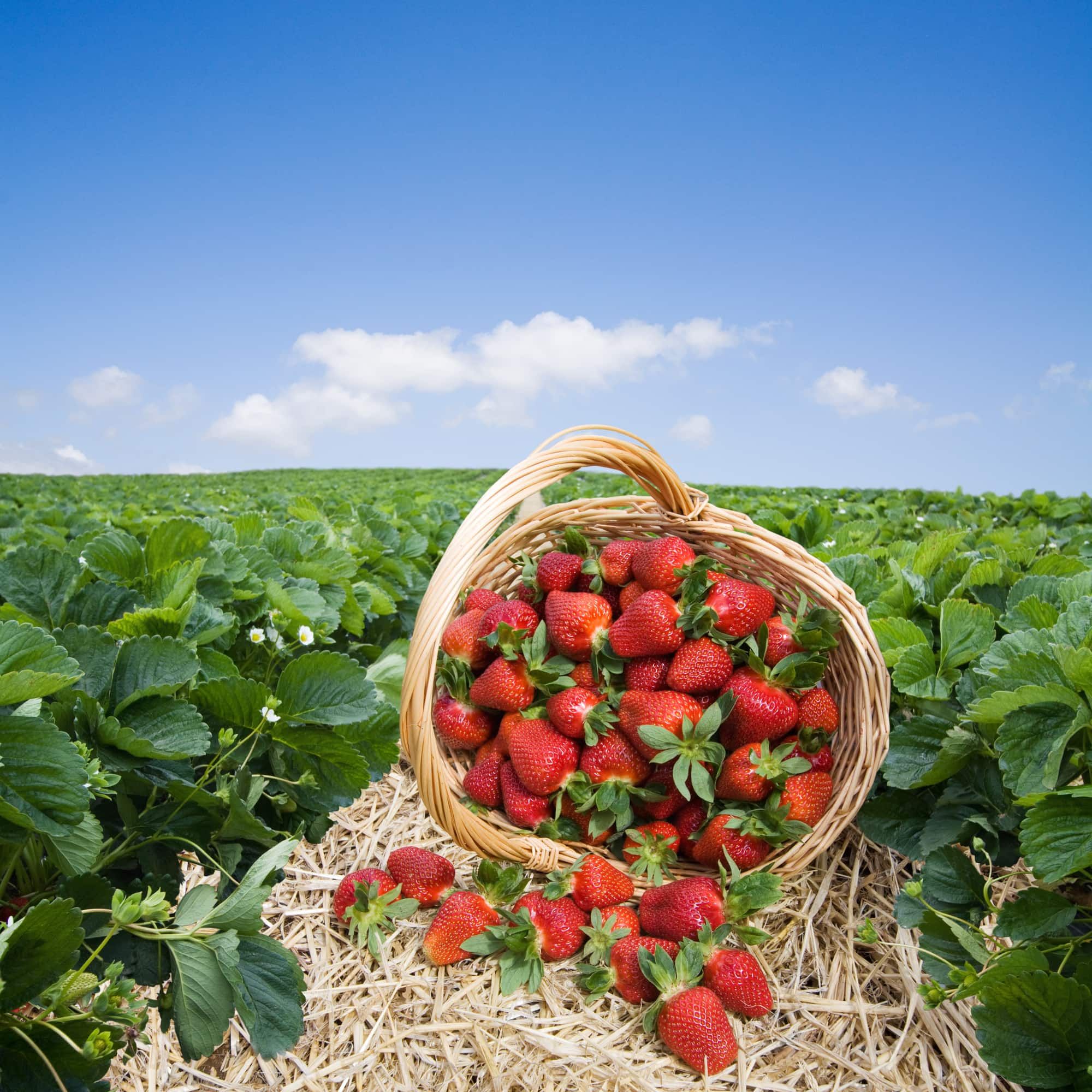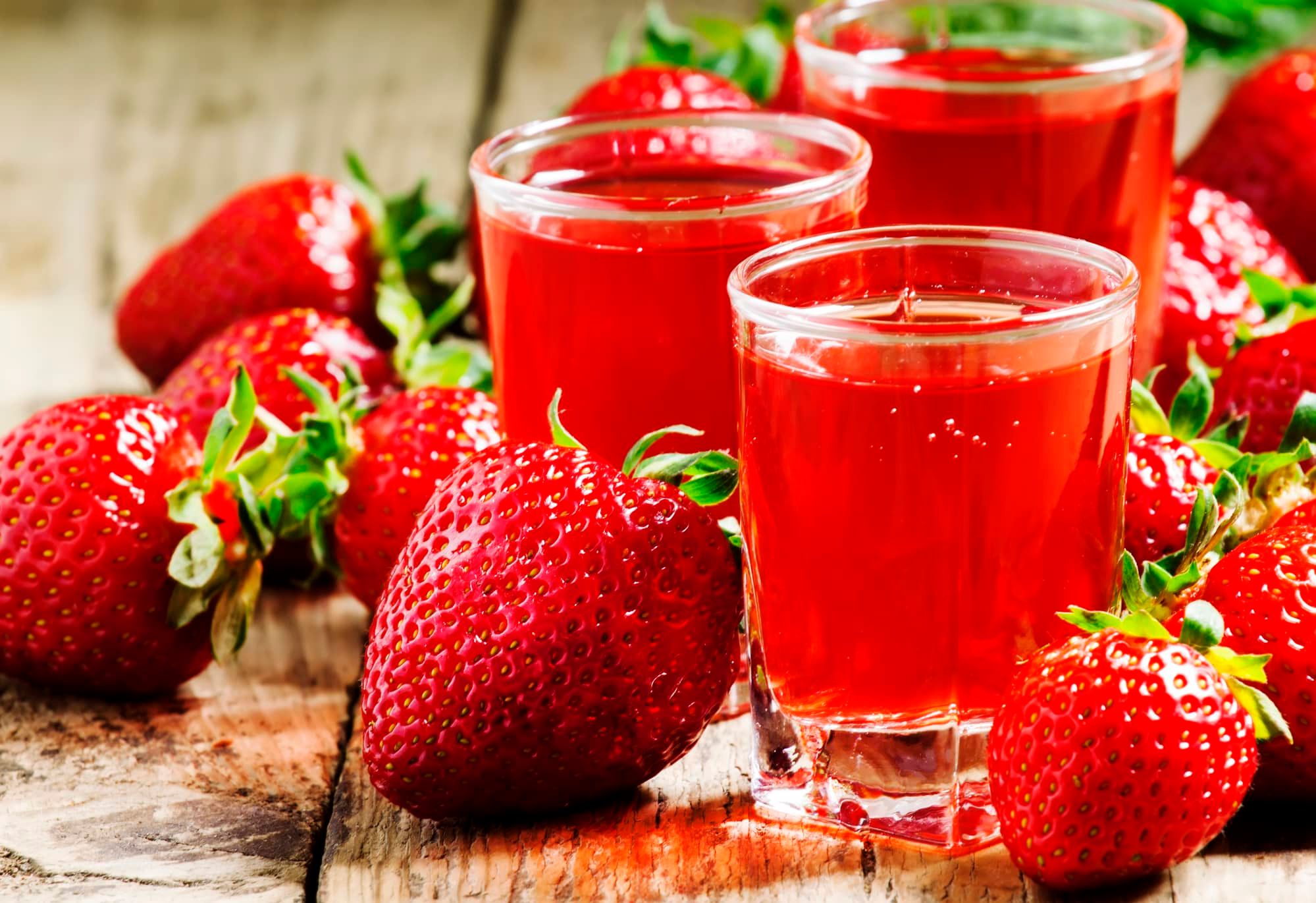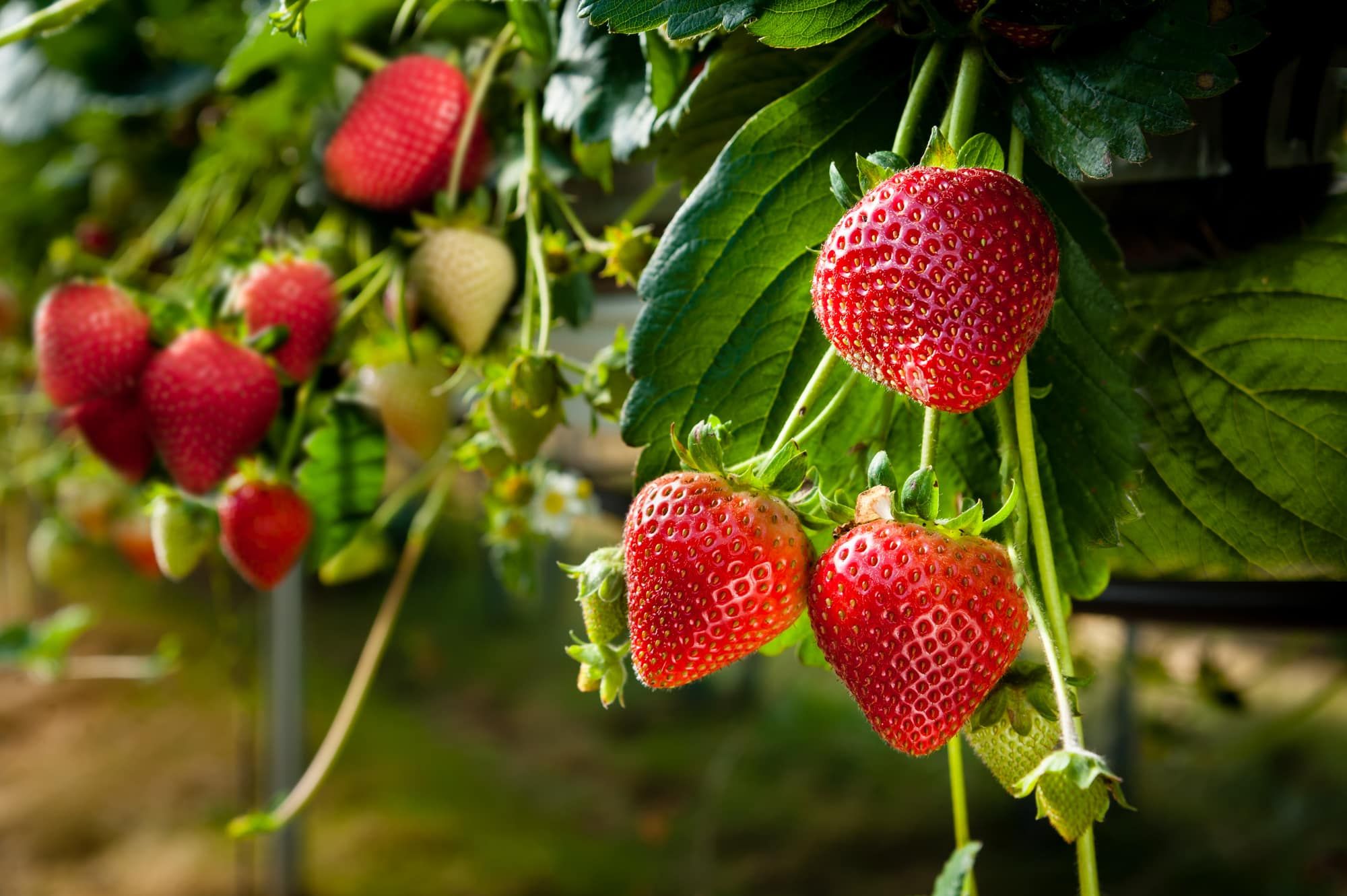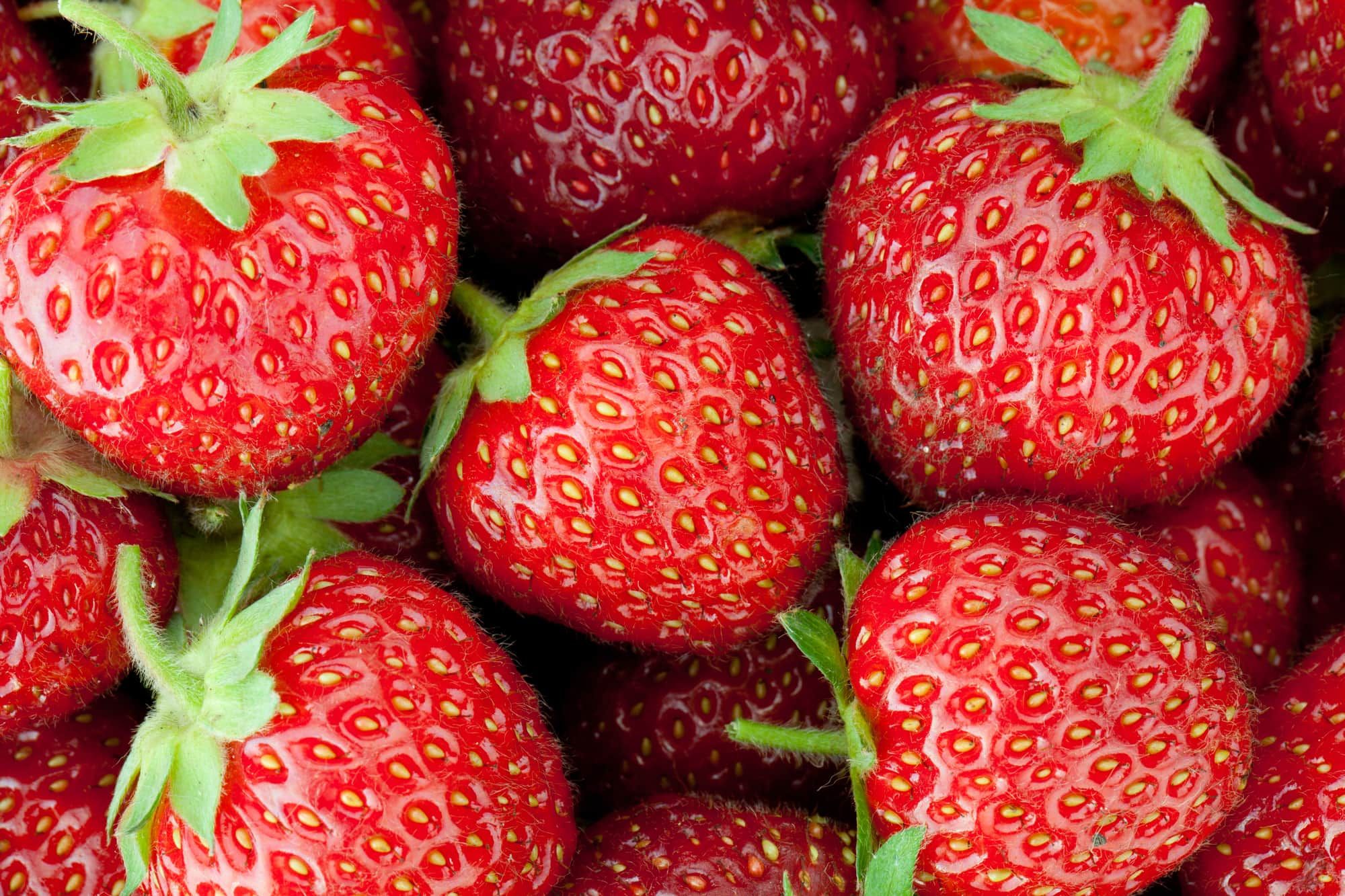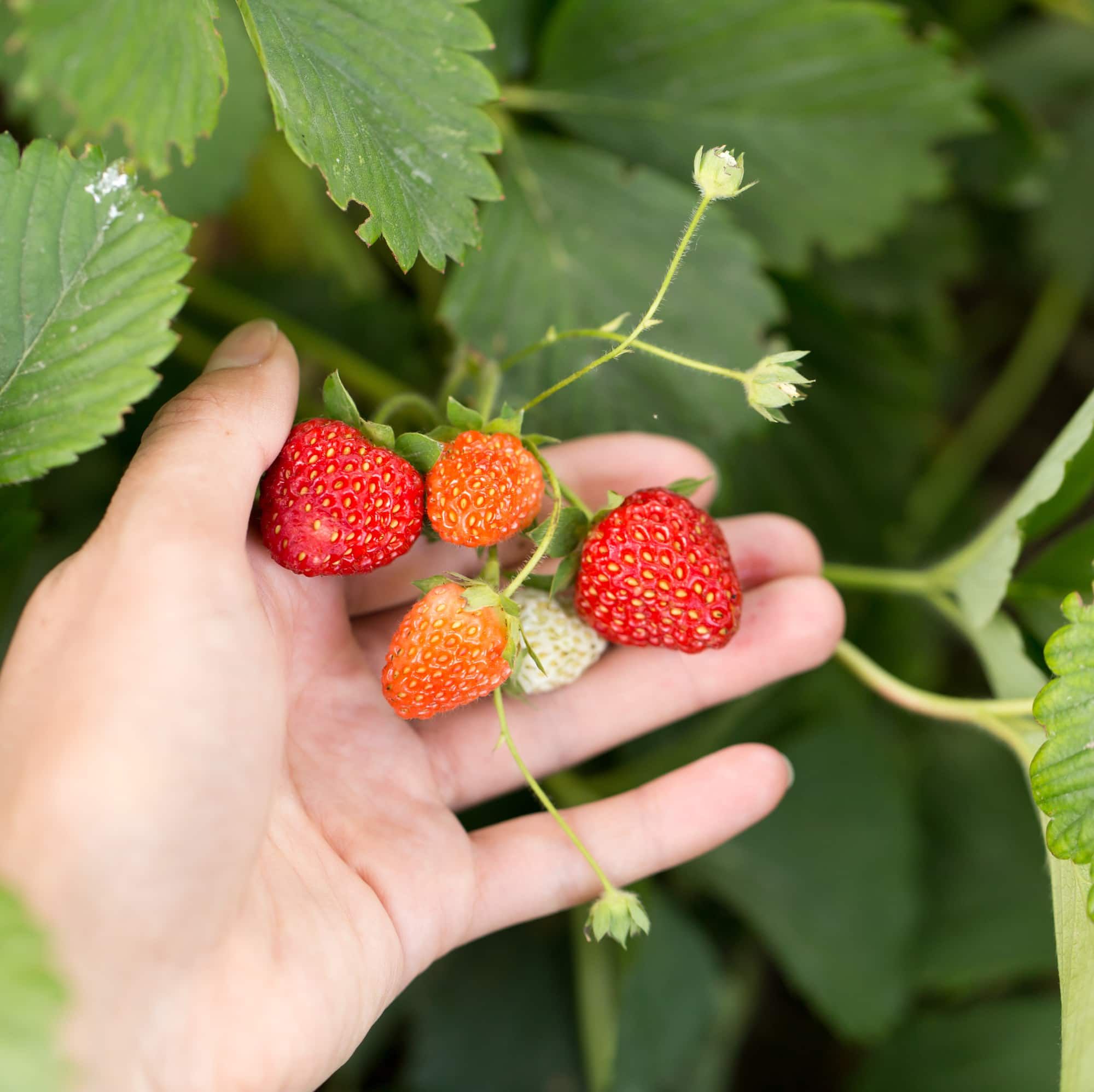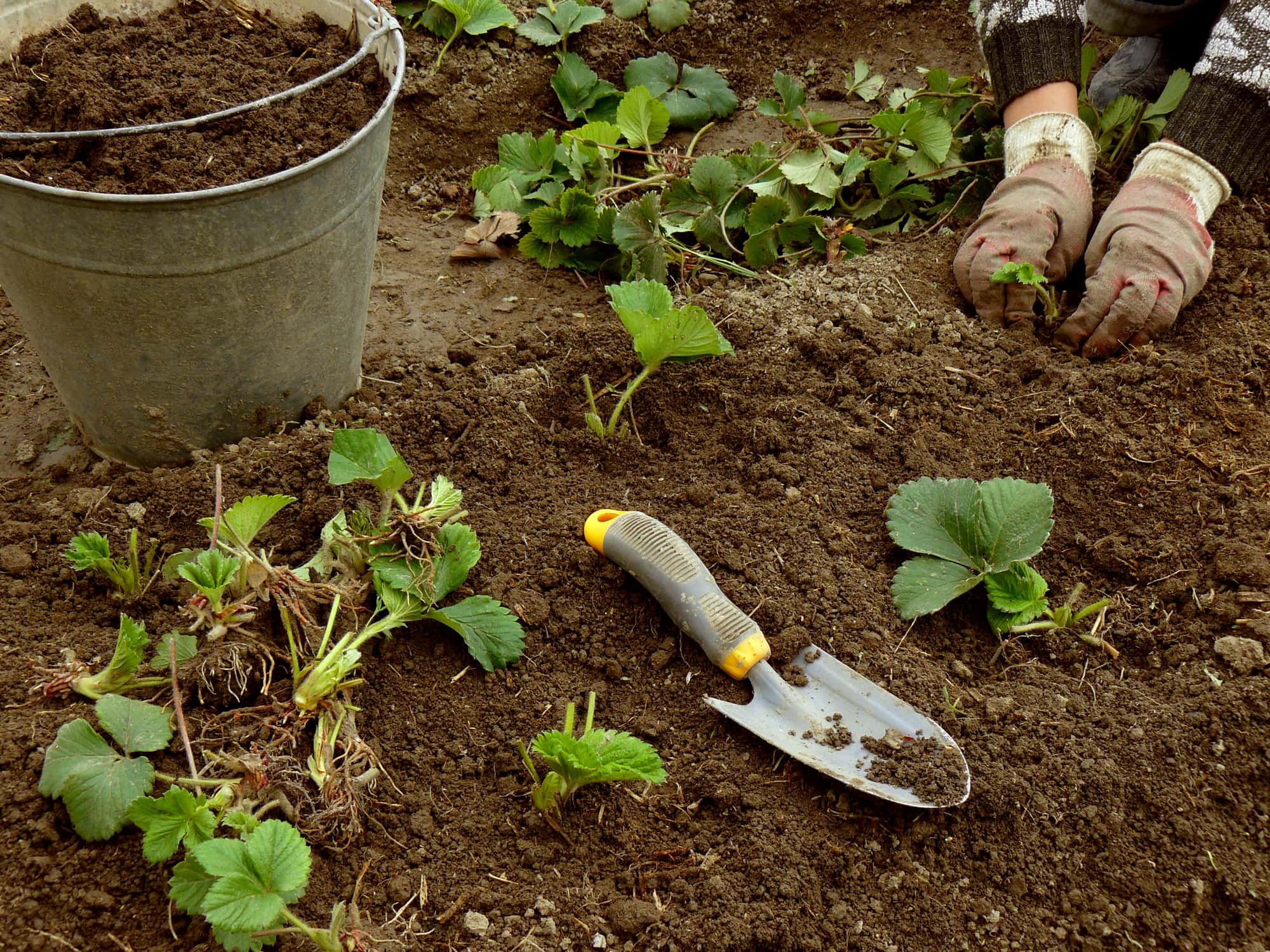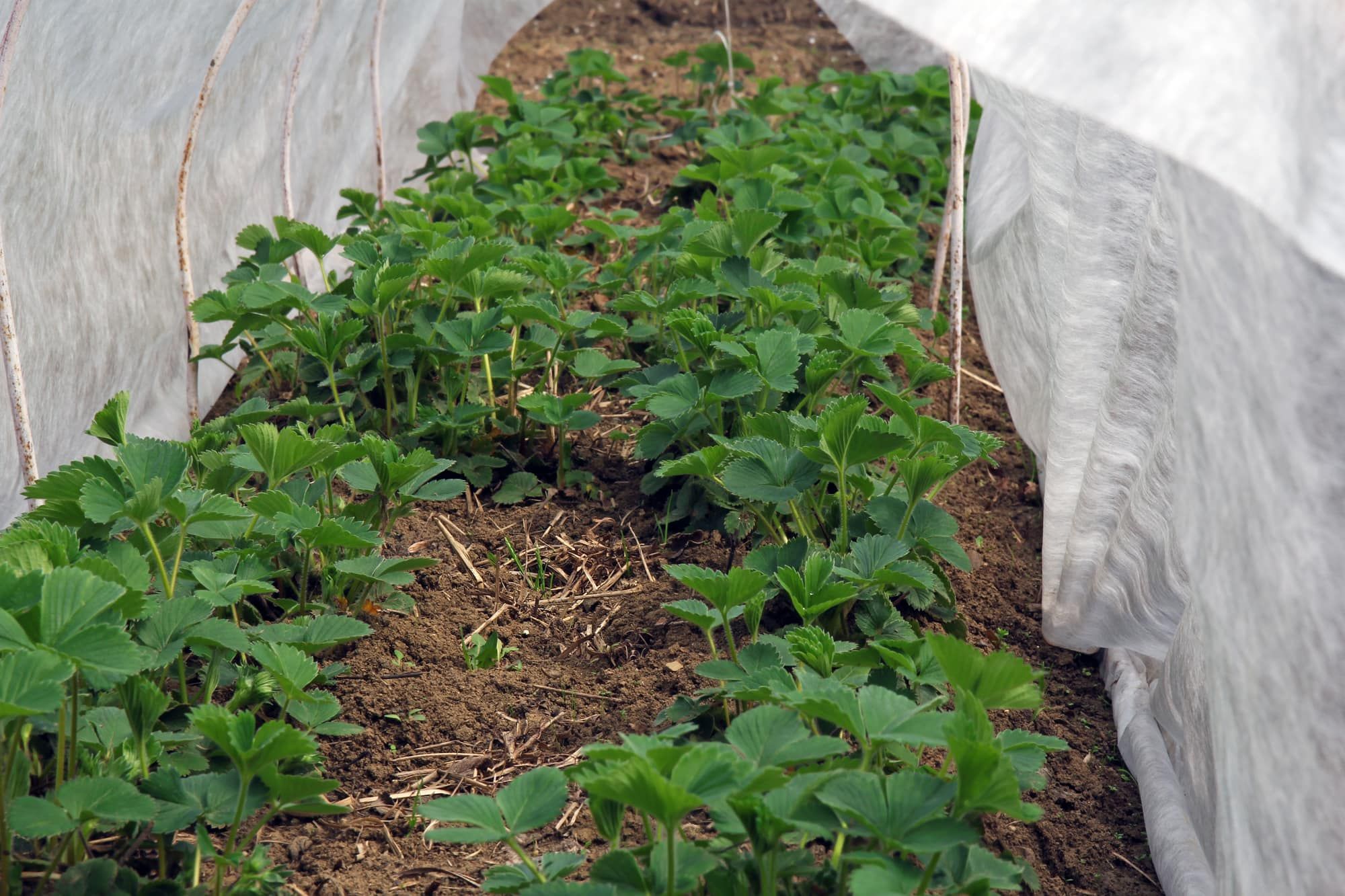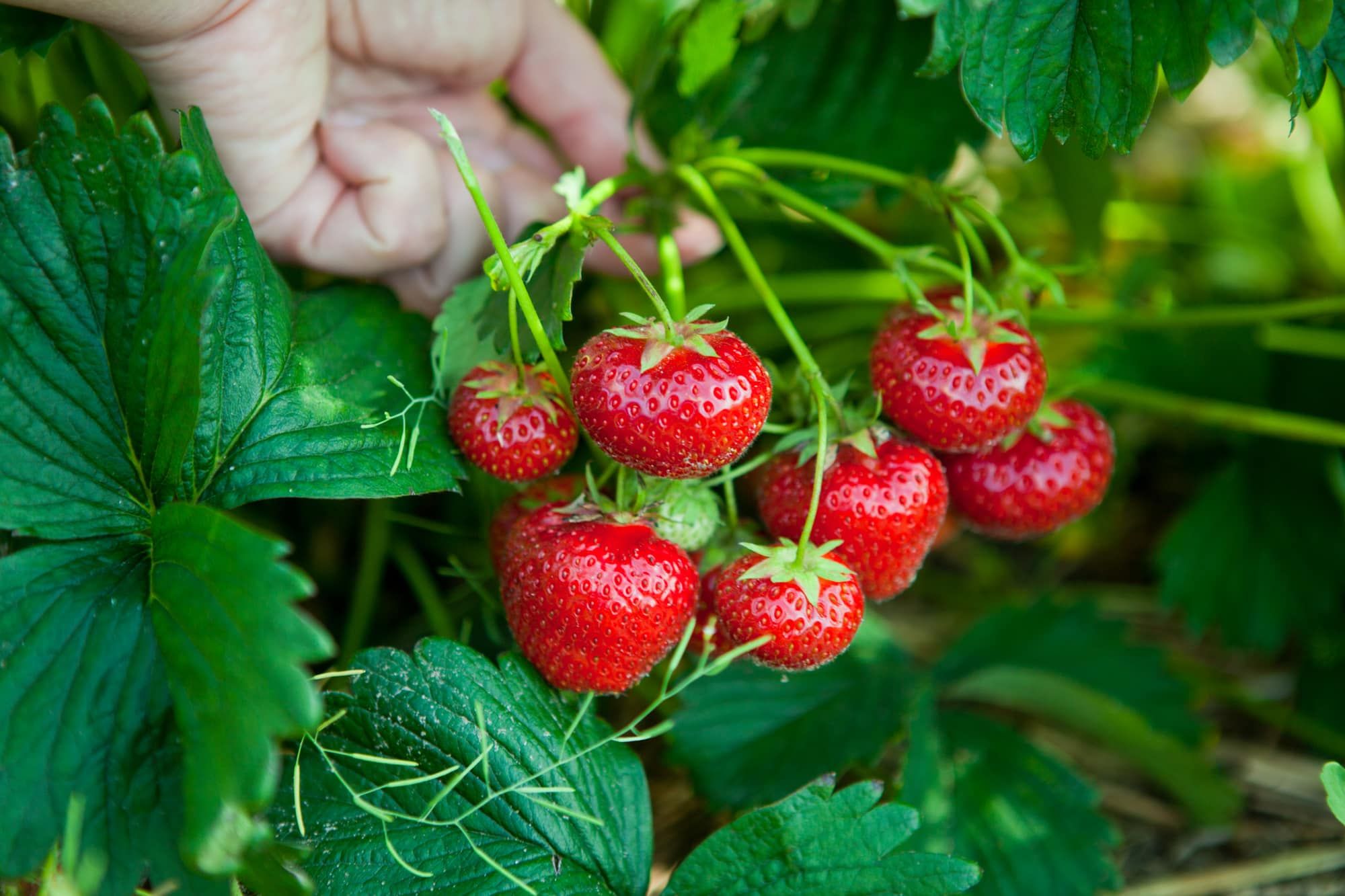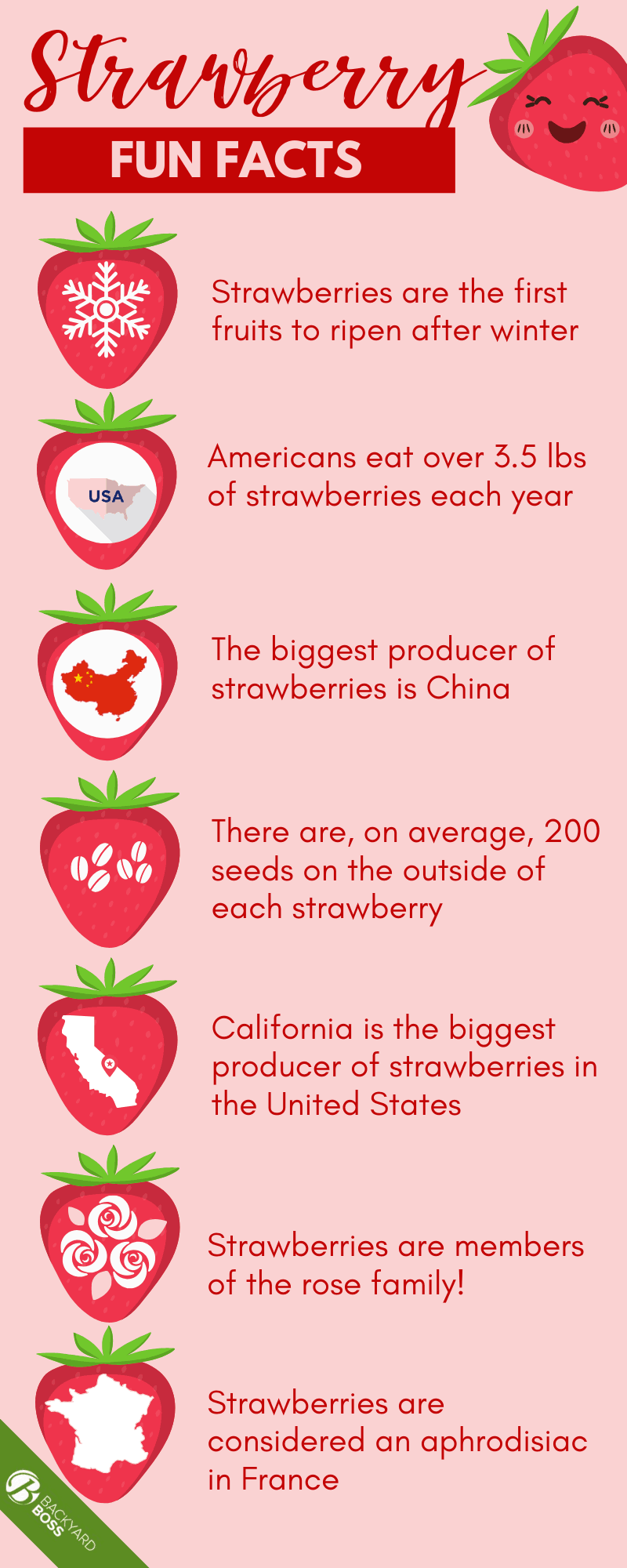Strawberries are one of the world's most favorite fruits and have been cultivated for thousands of years for its sweet, juicy, and slightly tangy flavor. Hardy, easy, and inexpensive to grow, they contain an abundance of vitamin C and antioxidants to help keep you healthy! They also pair well with a wide variety of both sweet and savory dishes, making them the perfect food to have on hand year-round.
This article explores the varieties, benefits, growing habits, and tips to provide you with an overview to help you learn all about strawberries.
What is a Strawberry?
Traditionally red in color, strawberries come in various red, pink, and even yellow or white tints, are somewhat heart-shaped and are studded with tiny seeds. Oh, they are also one of the most popular fruits in the world! Thanks to cultivation and careful breeding, they also can come in a variety of sweet to tart, yet juicy flavors, depending on what they are being used for.
Although called a berry, the strawberry is technically an aggregate accessory fruit since it is not derived directly from the plant’s ovaries. Hardy and cold-tolerant, it is a perennial plant that belongs to the genus Frageria and has been cultivated for thousands of years from wild species.
The History of the Strawberry
First mentioned within writings derived from the Mediterranean areas of Europe and Asia, wild strawberries were mostly small, delicate, and lacking in overall flavor. They were not eaten as a staple food and seen more as an ornamental although they most likely were harvested throughout the world by ancient hunter-gatherer people. Since various varieties have been found to be native on almost all the continents, it is likely they have an incredibly long, and varied history that started long before being purposely planted for harvest.
By the 14th Century, gardeners within France were transplanting wild forest varieties into gardens and breeding them for size and flavor. By the 1700’s various species of strawberries from around the world were being traded and cultivated across oceans, and quickly became a popular dish for both the wealthy and poor alike.
It was at this time that the native North American strawberry, Fragaria virginiana, and Chilian strawberry, Fragaria chiloensis, were hybridized to create the ancestors of the varieties we find in our gardens today.
Health Benefits of Strawberries
These juicy, sweet, bite-sized fruits are an excellent source of Vitamin C, manganese, folate, and potassium. They also are full of antioxidants, all of which support heart health and blood sugar levels. At 97% water, 100 grams of strawberries have only 32 calories, 7.7 grams of carbohydrates (of which 26% are fiber), and 4.9 grams of sugar, and a low glycemic index of 40.
They also are full of various plant compounds that have been proven to provide various health benefits, especially pertaining to the heart and the ability to fight off infection and inflammation.
Do Strawberries Cause Allergies?
Unfortunately, strawberries can cause allergies, especially in young children. They contain a protein that triggers what is called a pollen-food allergy and cause mild tingling or itching of the mouth, or a more severe anaphylactic shock marked by tissue swelling and breathing problems. The allergy protein is related to the anthocyanins that cause the red coloration since white strawberries don’t generally cause any problems.
Types of Strawberries
Strawberries are categorized into three different varieties of which contain close to 250 different types. These have all been hybridized for color, flavor, size, and various climates. This allows you to pick and choose from both seeds and seedling purchases based on personal preference, as well as your own knowledge and ability to grow plants under differing conditions. They also have been bred to be resistant to certain diseases, cold weather, or even grow in a more compact, runnerless form.
June-Bearing Strawberries
June-bearing strawberries are by far the most common variety and are further divided by early, mid, and late-season bearers. These are often marked by large, sweet berries and when you mix and match different plants can prolong your harvest longer than the 10-14 day average.
The early season begins producing mature fruits in late spring, but is dependent upon temperature variables and differs from one area of the country to another. Each seasonal difference overlaps one another by about a week so careful planning can result in a very healthy harvest indeed.
Everbearing Strawberries
Everbearing varieties don’t provide a continual harvest but are able to provide two, sometimes three, harvests depending on your climate. They also produce mature fruits for up to two weeks with the occasional fruit produced through the summer. They supplement June bearing varieties quite well and help bolster crops. Their fruits are often large and juicy.
The first harvest is generally in late spring, with a second in late summer or early fall. Long growing seasons may see a third occur in late fall as well as long as the plants have enough nutrients to put into production.
Day-Neutral Strawberries
These are a unique variety that provides a good crop the first year they are planted and will continue to flower and set fruits whenever the temperature is between 35 and 85 degrees fahrenheit. The biggest difference other than the fact they have a more continual crop to offer is the fruits are smaller in size and rarely exceed one inch.
How to Grow Strawberries
As mentioned, strawberries are fairly easy to grow. Since they are originally hybridized from native species found around the world, they are tolerant of a wide variety of climates and variable temperatures. They are not susceptible to many diseases or insects, although you may find that small mammals and birds will often take a nibble from them- and if they become overripe may also draw in ants and other insects due to the sugars they produce.
They also send out runners to reproduce as well as having the ability to reseed. This allows them to be grown in small spaces and can be a fun addition to container gardens and DIY container projects.
Soil
Although they are tolerant of many soil types, they grow best in loamy soil that allows for drainage but holds moisture. Mix a nutrient-rich compost with sandy and clay-like soils to create the ideal planting surface. Keep the pH between 5.5 and 7.0 for juicy, rich flavor.
Where to Plant
Strawberries do very well when planted on a mound, or raised row at about 20 inches from one another to allow room for runners. When planting seedlings, keep the crown at the level of the soil to support the fast growth of the plant. You can also use special strawberry planters, or simply use containers of your own choice.
Also, rotate the crop when possible, and keep from planting in sites that have recently had strawberries, tomatoes, eggplants, or peppers since they all utilize similar nutrients for production. You can ‘feed’ the soil as well when plants go dormant if you plan on leaving them in the same place.
When to Plant
Treat your strawberries as you would any other plant each spring. If putting in new seedlings, plant after the last frost, or place under a cold frame to protect tender plants. You can also foster the runners each plant puts out.
Sowing Seeds
Strawberries are easy to start from seed. It is best if you start them indoors during late winter in a greenhouse or sunny window. Simply press seeds into a moist substrate in starter trays. They will take a few weeks to germinate, but once they get started will take off. They most likely will not produce until the following year however.
Harvesting and Storing
Harvest strawberries when they are a uniform color. The ends of the fruit will begin to ripen first and over a period of a few days the color will deepen and spread upwards towards the stem. When the color touches the stem they are generally at their most ripe. Those grown at home are the sweetest since flavor begins to diminish once picked.
You can use strawberries in your favorite recipes, use them in jams and jellies, make them into pies, cut up into salads, and eat as they are; the list is endless when it comes to using them in your favorite dishes.
They also are very easy to store since they can be canned, frozen, or even pickled. Just be sure not to rinse strawberries until you are ready to eat, prepare, or store since it will speed up the spoiling.
Fun Facts
- Strawberries are the first fruits to ripen after winter
- Americans eat over 3.5 lbs of strawberries each year
- The biggest producer of strawberries is China
- There are, on average, 200 seeds on the outside of each strawberry
- California is the biggest producer of strawberries in the United States
- Strawberries are members of the rose family!
- Strawberries are considered an aphrodisiac in France
Conclusion
Strawberries are a favored fruit that is native to just about every continent and has been a food source for tens of thousands of years. Their cultivation has led to plump, juicy, and sweet fruits that we enjoy today whether you purchase them from a local grocer, or grow them in your own backyard.
An easy to keep perennial, they are full of vital nutrients and are a heart-healthy choice. They also grow well in containers, and if you plant various varieties can provide you with fruit the majority of the year. They also can be grown indoors!
If you have any questions or comments, please let us know below. And, as always, please share!

